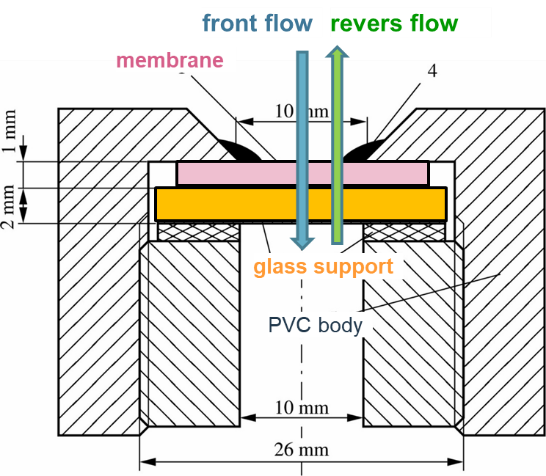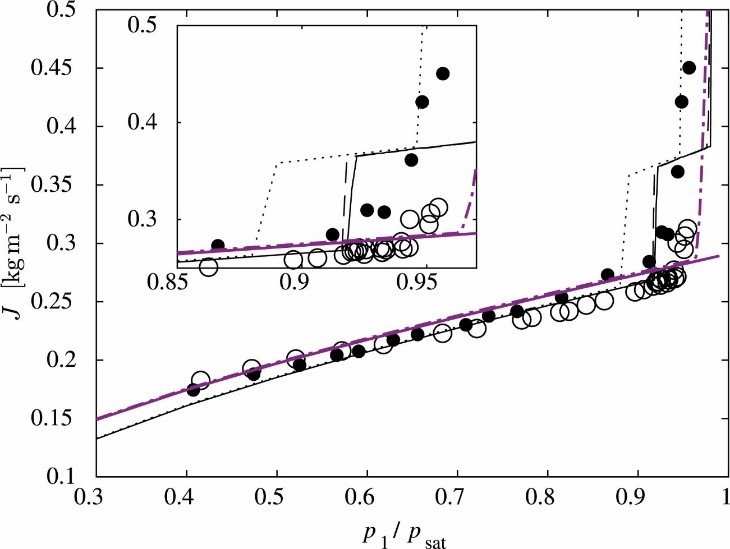Experimental and numerical study of the flux of isobutane vapors near saturation through multi-layered ceramic membranes
Capillary condensation of vapors in small pores can significantly affect the efficiency of gas separation through a porous membrane. It occurs under pressure conditions close to the saturated vapor pressure of the condensable gas. Our latest work in collaboration with Dr. Loimer from the Technical University of Vienna investigates experimentally and theoretically the transport of vapors of isobutane near saturation during permeation through multi-layered asymmetric membranes (3 to 5 layers with a pore size of 3 mm to 20 nm). The influence of the upstream state of the vapor, whether far or close to saturation, and of the orientation of the membrane on the mass flow rate was investigated. For a membrane with five layers, the mass flux increased by about 80 % for a vapor close to saturation. Also, close to saturation the mass flux in the flow direction from the separation layer to the support was up to 50 % larger than in the opposite direction. Three theoretical descriptions of the flow process were given in the work, assuming that condensation may take place, with respect to heat transfer from the surroundings.
 |
 |
| Membrane holder | Experiment and theory comparison |
Setnickova K., Petrickovic R., Uchytil P., Loimer T.: Experimental and numerical study of the flux of isobutane vapors near saturation through multi-layered ceramic membranes. Separation and Purification Technology 306, 122604, 2023. DOI: 10.1016/j.seppur.2022.122604